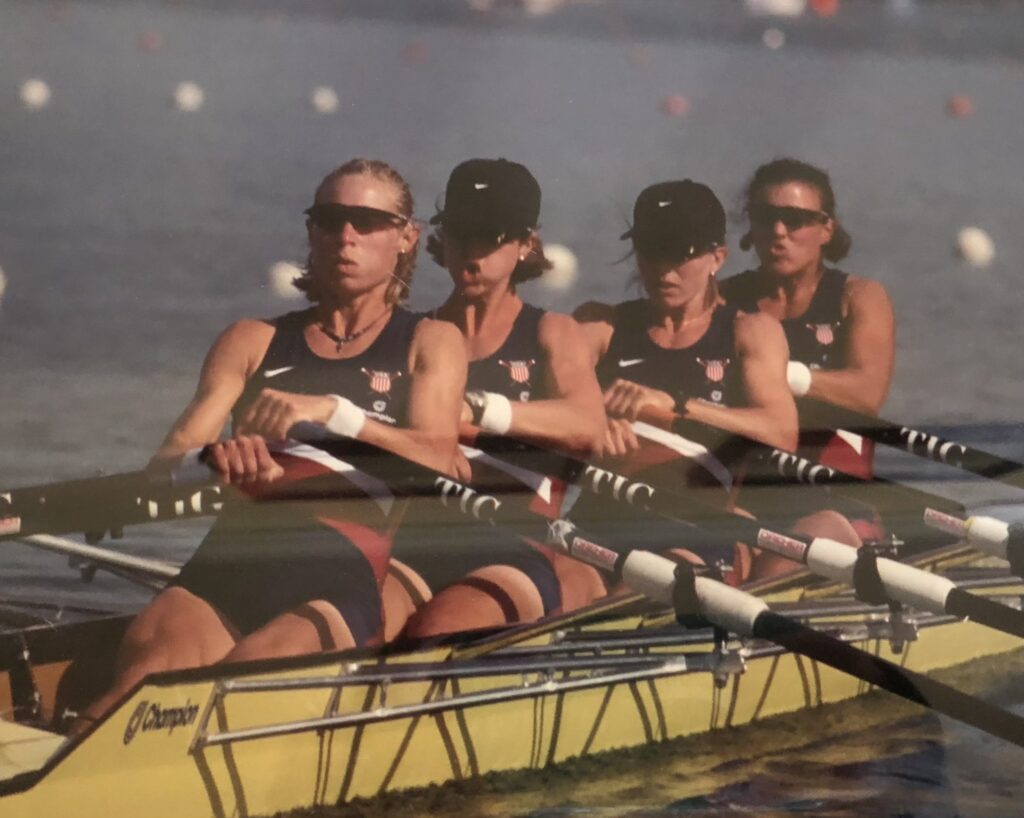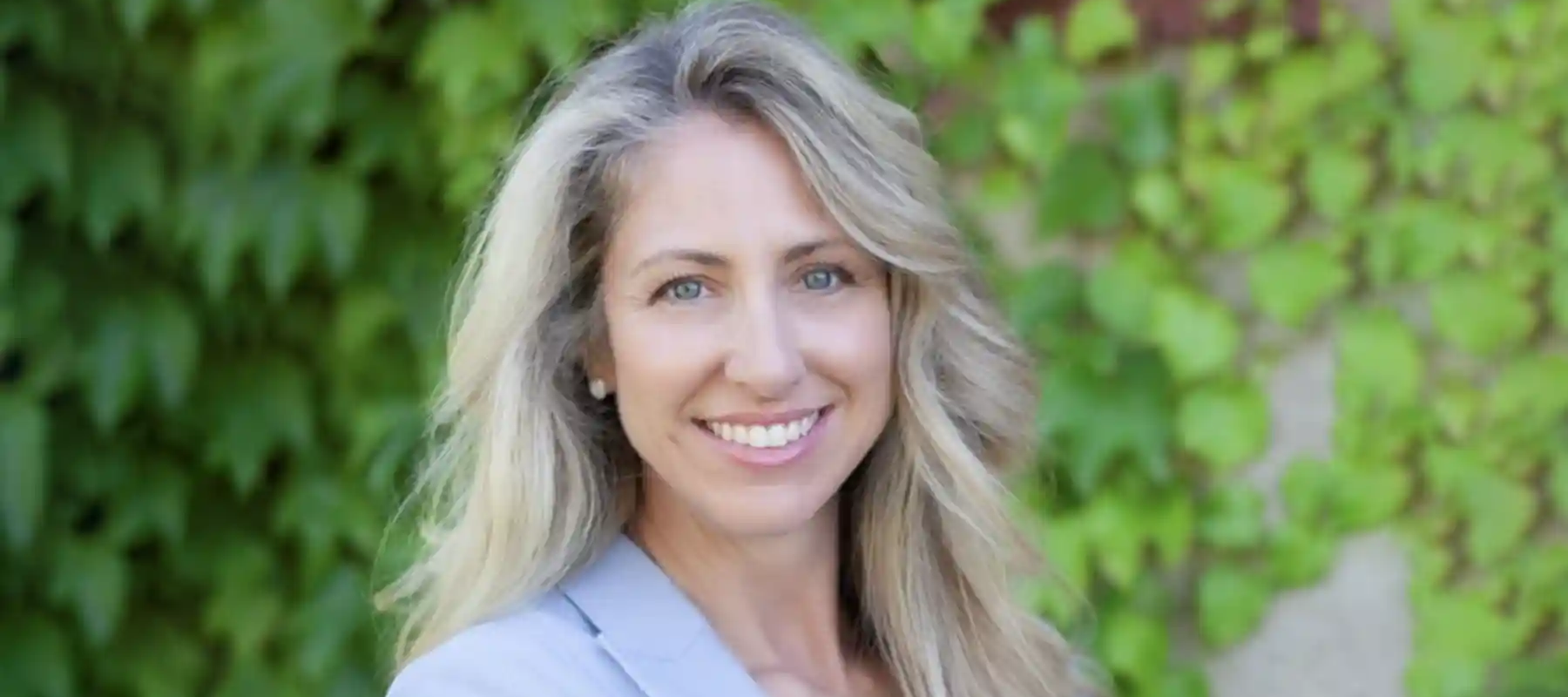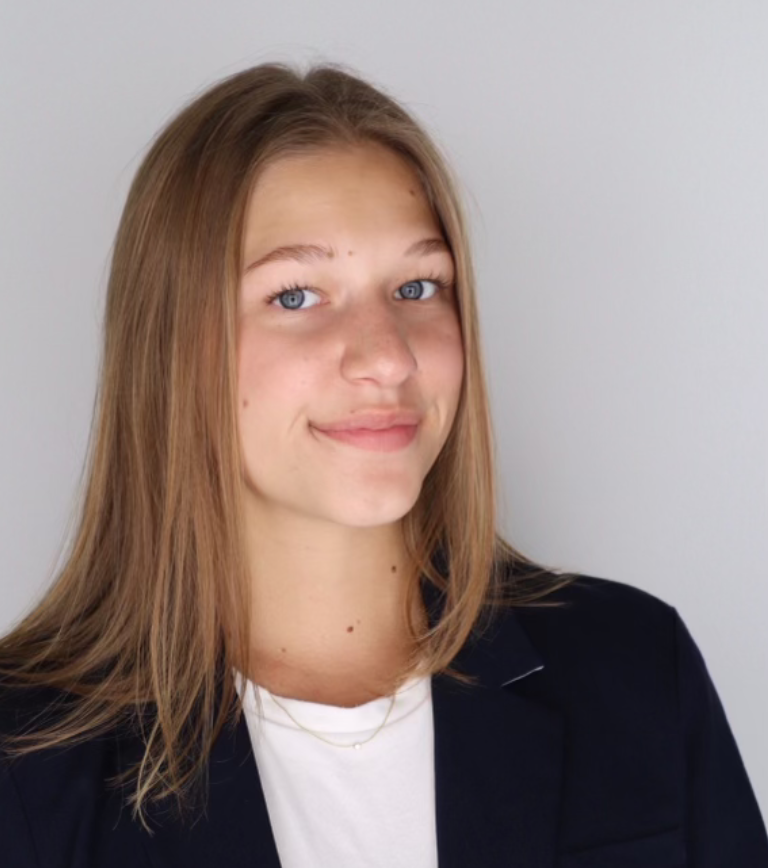“I lead by changing outdated systems through sports science research and collaborating with athletes, parents, coaches, and experts globally. My goal is to ensure that every female athlete reaches her full potential.”
Sports medicine doctor and endocrinologist Dr. Kate Ackerman exposed how only 6% of exercise physiology research includes female participants. The remaining 94% of studies with regards to strength training, hormonal response, and injury prevention focus on the male body. This overwhelming gender disparity in research has misguided female athletes. By not fully accounting for the physiological differences in athletes, women rely on exercise science that is not structured to help them perform at their best, and at worst can lead to harm.
Dr. Ackerman has focused on female athlete health and performance research for over 15 years. As an elite athlete herself (she rowed for the US National Team), she discovered how little female athletes were studied in both her professional and personal experiences. This gap in the system encouraged Dr. Ackerman to find answers to help girls and women achieve their peak performance in sports physically and emotionally. Dr. Ackerman was a rower in college and later made the U.S. National team while balancing medical school. After Dr. Ackerman graduated from Johns Hopkins and began to explore how little female athletes are studied and what their bodies need.

Dr. Ackerman’s experiences showed her that the United States’ culture was not entirely built for women. While rowing, Kate realized that there were never female-specific physical check-ins to assess how her body was reacting to training, recovering, or optimizing performance. The standard protocols she and her teammates went through were created by and catered for male athletes. Without tailored guidance, she felt as though she was training without a clear understanding of how her body was responding. To this day, Dr. Ackerman knows that she will never be sure whether she reached her highest potential as an athlete, but she has dedicated herself to researching and providing more knowledge, resources, and support so that female athletes and future generations can reach their peak performance.
Kate was itching to find answers. Having only male leaders develop studies, statistics, and training based on only men for then both men and women to use, Kate proactively began to study, learn, and use any helpful resource. She not only collaborated with the people near her but globally to discover more. Despite Kate’s impressive background as an elite rower and medical professional, she has relied on a collaborative pathway with an open approach to reveal the best solutions for female athletes.
“You have to be willing to work hard, because this isn’t one of those things where you graduate immediately and you’re an expert. Unfortunately, you’ve got to put in the work and you’ve got to roll our sleeves up, but a lot of this work could be really fun.”
A few years into her career, Kate took the initiative to raise more awareness about female athlete inequity. In 2013, Kate launched the Wu Tsai Female Athlete Program while orchestrating her first female athlete conference—bringing together her friends and colleagues who also happened to be some of the best and brightest minds in health. The program uses sports science to focus on female-specific needs in training, recovery, and injury prevention. She wanted to gather athletes, coaches, parents, and medical professionals to discuss what people need to know about female athletes and to educate others. Through collaboration, networking, and research, she hosted her first conference. Although small at first, the conference that was originally 20 people grew to over 200 people. By advocating for research addressing female physiology, she intended to catalyze a shift for women in sports.
Kate firmly believes the only way that shift can be catalyzed is through collaboration– it is essential to advancing research and improving conditions for female athletes. “If I haven’t said it enough, collaborate. It is way more fun and productive to work as a team. You shouldn’t reinvent the wheel, and that’s what a lot of people end up doing.” Rather than working in isolation, she has made it her mission to bring people together–athletes, parents, coaches, experts–from different fields to collectively push for change. Kate is aware that tackling such a gap in sports science requires differing views and knowledge. By fostering a network of various people from different fields, Kate is uncovering new information that will have a lasting impact, setting new sports science standards, and supporting female athletes to help reach their peak performance.

Kate’s dedication to advocating for female athletes goes beyond doing research, to challenging the system. She is not afraid to speak out, even if it disrupts sports science and medicine norms.
“I have gotten into so much trouble in my life for speaking out, but I’m in a privileged position, and I’m going to keep doing so because I’m able to.”
Kate uses her platform to question and promote research that fosters real change. By raising awareness and demanding more, Kate ensures that women in sports will have the knowledge, resources, and guidance initially deserved–all to perform at their best.
There were times during Kate’s education and career when she was one of the few women, if not the only woman, in a room full of men. Kate feels it is important to diversify spaces when they are dominated by people who think alike and have similar experiences. Sports today could have been significantly different if women leaders had been involved earlier. Kate took the initiative to make that change and has helped pave the way for those to come. By becoming a leader in a male-dominated space, Kate raised more awareness of what young girls and female athletes were missing and needed.
While Kate has started a great program and completed an immense amount of research, she emphasizes that progress isn’t only about starting something, it is to ensure women will continue to have the tools to succeed. “Young people in the room that have energy, do your homework, get educated, learn about physiology, learn about advocacy. Go out there and be a strong female coach. Go learn how to do the work because we need more people doing it.” Her call to action highlights a need for the next generation to step up, not only as athletes but also as leaders.
In her roles as U.S. Rowing Medical Commissioner, a key figure at Boston Children’s Hospital, and director of the Wu Tsai Female Athlete Program, Kate relentlessly challenges systemic inequities. While her groundbreaking accomplishments are impressive and can feel overwhelming to others, the progress she has made along the way has been built upon a network of women who refuse to carry out a male-dominated system. Kate’s journey is meant to be shared to spark change through a collective. Her leadership shows it is time to demand a future where women are empowered with proper support, tailored to their needs, and provided the resources they deserve.
Captured Fall 2024.

